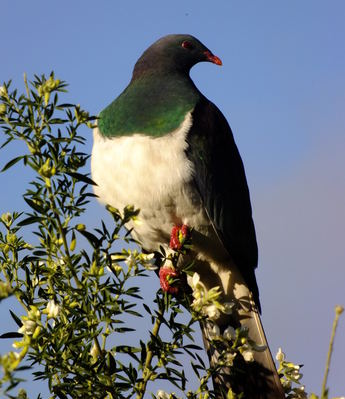Coprosma
Details
A genus of flowering plants in the Rubiaceae family. It is found in New Zealand, Hawaiian Islands, Borneo, Java, New Guinea, islands of the Pacific Ocean to Australia and the Juan Fernández Islands.
The name Coprosma means "smelling like dung" and refers to the smell (methanethiol) given out by the crushed leaves of a few species.
Many species are small shrubs with tiny evergreen leaves, but a few are small trees and have much larger leaves. The flowers have insignificant petals and are wind-pollinated, with long anthers and stigmas. Natural hybrids are common. The fruit is a non-poisonous juicy berry, most often bright orange (but can be dark red or even light blue), containing two small seeds. The orange fruit of the larger species were eaten by Māori children, and are also popular with birds. It is said that coffee can be made from the seeds, Coprosma being related to the coffee plants. A notable feature (also found in other genera of Rubiaceae) is that the leaves contain hollows in the axils of the veins; in these, and on the leaf stipules, nitrogen-fixing bacteria grow. In addition the hollows, or domatia, encourage certain kinds of mites to take up residence, which feed on and reduce parasitic fungi which attack the leaf.
Recommended as chicken forrage by Bill Mollison
Height (m)
0.5 - 3
Forest layer
shrub
Evergreen
Edible
Fruit / berries
Perennial
Drought tolerance
Propagation method
Sow pot / tray
Wind tolerance
High
Shade / Sun
Sun
Soil type
Most




